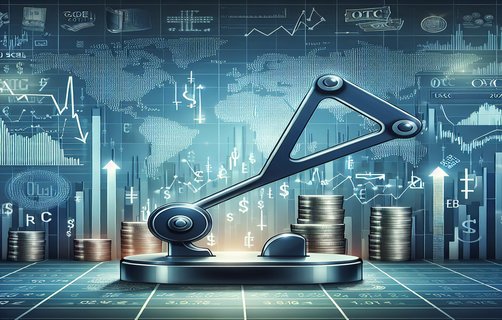 tp官方下载安卓最新版本2024_tpwallet最新版本 | TP官方app下载/苹果正版安装-TP官方网址下载
tp官方下载安卓最新版本2024_tpwallet最新版本 | TP官方app下载/苹果正版安装-TP官方网址下载
Exploring the Integration of Smart Economic Systems in Decentralized Finance: A Comprehensive Analysis

The rapid evolution of technology has heralded an era where smart economic systems are not just a concept but a vital necessity for sustainable growth in the financial sector. With the advent of cryptocurrencies and blockchain technology, decentralized finance (DeFi) has become an essential component of the global economic landscape. This paper delves into key aspects surrounding smart economic systems, Byzantine fault tolerance, efficient management services, secure collaboration, industry predictions, decentralized insurance, and the role of USDC—a stablecoin that has gained significant traction in the DeFi realm.
To begin with, a smart economic system can be defined as an infrastructure that leverages artificial intelligence and blockchain technology to enable automatic and efficient transactions. According to a report by the World Economic Forum, by 2030, blockchain technology is expected to contribute over $1 trillion annually to the global economy (World Economic Forum, 2020). This highlights the importance of integrating intelligent systems into financial infrastructures. Central to the mechanics of these systems is Byzantine fault tolerance (BFT), which ensures consistent and reliable communication across distributed networks, mitigating risks of data corruption and fraud. BFT allows these economic systems to maintain integrity and trustworthiness, especially in the context of decentralized networks where traditional regulatory structures are absent.
Efficient management services are pivotal in orchestrating operations within a smart economy. These services are designed to streamline decision-making through data analytics, enhance responsiveness to market changes, and significantly reduce operational costs. The transition towards efficiency in economic management can be bolstered through automated tools and platforms that enable real-time visibility and control over resources. As these services evolve, they must also promote secure collaboration among stakeholders, ensuring that participation in the decentralized finance ecosystem is both transparent and holds participants accountable.
Concerning industry forecasts, the growth trajectory of decentralized finance signifies an opportunity to reimagine insurance through decentralized insurance models. This innovative approach eliminates intermediary costs and can lead to more equitable and personalized insurance solutions. Research from the InsurTech Global Market indicates that the decentralized insurance market is expected to exceed $7 billion by 2025 (InsurTech Global Market, 2021). Furthermore, the integration of USDC as a stablecoin facilitates easier transactions across decentralized platforms, paving the way for a more agile financial landscape.
In conclusion, the convergence of smart economic systems with DeFi represents a paradigm shift in how financial services are perceived and delivered. Organizations must lean into the demands of an evolving economic structure that prioritizes decentralization, efficiency, and security. As this integration unfolds, what new practices or technologies might emerge to further enhance the resilience of our economic systems? Are there potential risks that could arise from increased reliance on decentralized frameworks? How can collaborative efforts be structured to maximize benefits across various industries?
FAQ:
1. What is the significance of Byzantine fault tolerance in decentralized finance?
2. How can decentralized insurance models benefit consumers compared to traditional insurance?

3. What are the risks associated with using USDC in transactions?
- 08-10资产不动的时代:未来数字金融如何重塑全球经济
- 08-10数字金融新时代:解锁TP安卓版包的潜能与市场趋势
- 08-10解锁TP钱包的新境界:直接购买OKT的未来与挑战
- 08-10在数字浪潮中腾飞:揭秘TP安卓版本如何高效交易动物币
- 08-10解密TP钱包:区块链资产存储及多链交易的未来
- 08-10突破传统界限:TPWallet地址切换引领未来商业创新之路
- 08-10冷钱包:未来智能化社会的守护者
- 08-09颠覆传统:SMARS币与TP官方安卓版本的未来金融畅想
- 08-10二维码转账与工作量证明:imToken与TPWallet的技术探索之旅
- 08-10TPWallet:开创高科技支付新时代的先锋
- 08-09在未来的边缘:剖析TPWallet与WIN币的数字资产新生态
- 08-10当数字钱包遇上支付新时代:创新与隐私的辩证思考
- 08-10链上新纪元:如何将TP钱包无缝转移至欧意交易所
- 08-10RGN在TP钱包中的崭新旅程:重塑数字资产的未来
- 08-10从OK交易所到TP钱包:数字资产转移的全面指南
- 08-09波场交易新纪元:在创新商业管理与链上数据的交汇点上重塑金融未来
- 08-10TP钱包:解锁数字经济新时代的虚拟货币蓝图
- 08-10重塑未来支付:TPWallet改名背后的多链资产与多币种支付革命
- 08-10科技浪潮中的金融革新:从哈希现金到去中心化存储的全面探讨
- 08-09探索TPWallet最新版:破解智能支付的神秘通道
- 08-10解锁未来支付:tpwallet流动性不足的挑战与智能化社会的解决方案
- 08-09数字时代的浪潮:如何在新环境中找到代替TP钱包的智慧之选
- 08-10在数字海洋中启航:如何通过TP钱包创建OKEx钱包
- 08-10赋能未来的金融:TP钱包与币安链的全面解析
- 08-10数字资产的未来:在多链支持与高性能数据处理中追寻安全与创新
- 08-10未来经济的新宠:TP安卓版及其应用前景的全景分析
- 08-10面对缓慢币转:深度解析TP钱包的挑战与创新机会
- 08-09解锁EOS资产的未来:抵押在TP钱包的全面赎回指南
- 08-09解构TP安卓版:数字经济时代的安全之钥
- 08-10重塑财富未来:在TPWallet中质押代币的智能布局与趋势洞察
- 08-09TP钱包的未来:透视币圈智能化趋势与支付安全
- 08-09重新定义金融交易:全球科技支付与去信任化的未来
- 08-09掌握全球财富新机遇:TP钱包官网数字资产平台开启智能投资时代
- 08-10探索新版TPWallet:引领数字资产管理的新纪元
- 08-09探索TPWallet:区块链生态中的高效能技术与未来市场洞察
- 08-10TP钱包新纪元:USDT-HT兑换零手续费,开启数字资产的便捷时代
- 08-09数字未来:揭秘TP钱包防护与智能资产管理的创新之路
- 08-10探索TP钱包:一次跨越数字金融与技术边界的创新旅程
- 08-10塑造未来金融的数字资产 revolutions:TRC20TP的钱包新纪元
- 08-09Waves链的未来:以TPWallet为引擎的创新支付与身份保护之路
- 08-09在新时代的金融浪潮中,TP钱包助力EOS的逆风而行
- 08-09智能化时代的金融创新:探讨TP钱包BNB提现及其未来发展趋势
- 08-10开启数字未来:从区块链到高级分析技术的全面解读
- 08-10数字化浪潮下的TP钱包:助记词的安全与高效交易的未来
- 08-10在高科技浪潮中,如何安全地销毁TPWallet账户?
- 08-10数字金融新时代:TP钱包的智能化支付革命与未来展望
- 08-10在TP钱包中发币的未来:智能化支付与多币种生态的辩证发展
- 08-10掌控数字资产:深入解析tpwallet的冻结机制与安全保障
- 08-10重拾数字资产:如何找回卸载的TP钱包与未来支付平台的可能性
- 08-09探索TP钱包的空投世界:深入解读与商业潜力